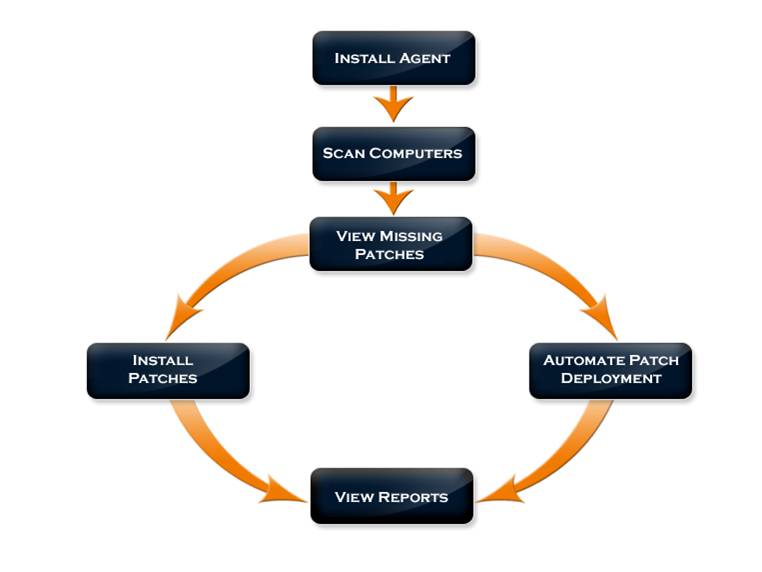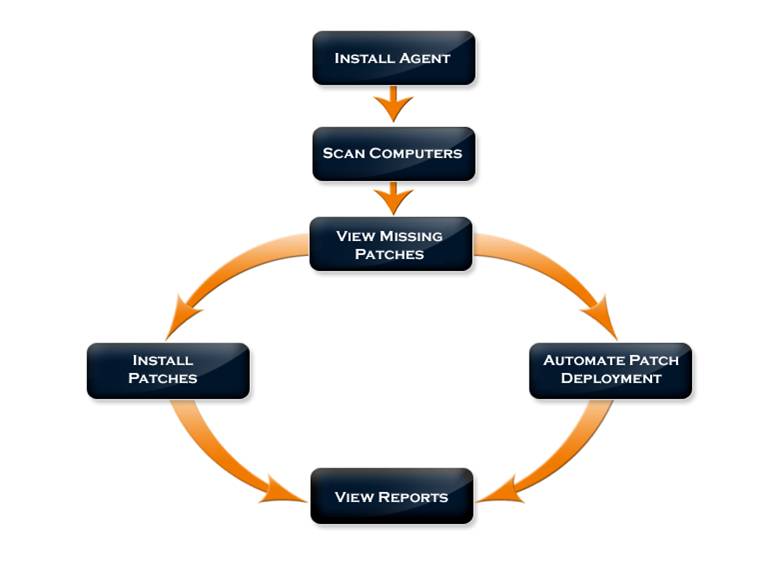Patch Deployment: Ensuring Security, Stability, and Performance for Your Systems
In the ever-evolving world of IT infrastructure, patch deployment plays a crucial role in maintaining the security, stability, and performance of software and hardware systems. A patch is essentially a software update designed to correct known issues, fix vulnerabilities, improve performance, or add new features to an existing application or operating system.
Patch deployment refers to the process of distributing, installing, and applying patches to systems and devices in a controlled and efficient manner. This is critical for ensuring that systems are up-to-date with the latest fixes and improvements, protecting them from potential security threats and operational disruptions.
This article will explore the importance of patch deployment, the steps involved, best practices, tools for effective patch management, and the potential challenges that organizations face when deploying patches.
Why Patch Deployment is Essential
1. Security Vulnerability Mitigation
The primary reason for patch deployment is to address security vulnerabilities. Over time, flaws and weaknesses are discovered in software, hardware, and operating systems. These vulnerabilities can be exploited by attackers, potentially leading to data breaches, ransomware attacks, and other forms of cybercrime. Regular patch deployment helps close security gaps, reducing the attack surface and protecting systems from exploits.
2. Bug Fixes and Stability Enhancements
Patches are not limited to security fixes; they often address bugs and software issues that cause crashes, slowdowns, or incorrect behaviors. These bug fixes can significantly enhance system stability and user experience, ensuring that applications and systems perform as intended.
3. Performance Improvements
Many patches include optimizations and performance improvements that make systems run more efficiently. This may involve speeding up processes, reducing memory usage, or fixing compatibility issues with other software. Deploying patches can, therefore, contribute to better overall system performance.
4. Compliance with Regulations
In many industries, maintaining up-to-date software is not just a best practice but a legal requirement. Regulatory standards such as the General Data Protection Regulation (GDPR), Health Insurance Portability and Accountability Act (HIPAA), and Payment Card Industry Data Security Standard (PCI DSS) mandate that organizations apply patches promptly to secure sensitive data and maintain compliance.
5. New Features and Functionality
Some patches deliver new features, functionalities, or enhancements that improve the software experience. For example, new features may be added to enhance usability or introduce new tools that help organizations achieve more with their existing software.
Patch Deployment Process
To ensure that patches are deployed effectively, organizations need a structured process. Here is a general outline of the patch deployment lifecycle:
1. Patch Identification and Collection
The first step is to identify which patches are needed for your environment. This involves:
- Monitoring Vendor Announcements: Keeping track of patch releases from vendors (e.g., Microsoft, Linux, Adobe) or system integrators to identify which patches have been released for the software and hardware in use.
- Patch Scanning Tools: Using automated tools to scan your systems for missing patches or known vulnerabilities. These tools can identify outdated software versions and missing patches across multiple systems.
2. Patch Testing and Validation
Before applying patches to live systems, it’s essential to test the patches to ensure they don’t introduce new issues or incompatibilities. A test environment, which mirrors the production environment, is often used to perform:
- Functional Testing: Verifying that the patch functions as intended and does not break any existing functionality.
- Compatibility Testing: Ensuring that the patch works with other software and hardware components in the environment.
- Security Testing: Checking that the patch effectively addresses security vulnerabilities and does not introduce new ones.
3. Patch Deployment Plan
Once a patch has been tested and validated, it’s time to create a deployment plan. The plan should include:
- Deployment Timeline: Scheduling the patch deployment during a time that minimizes disruptions to users, often during off-peak hours or maintenance windows.
- Affected Systems: Identifying which systems or devices will receive the patch and ensuring that the right resources are available.
- Backup and Rollback Strategy: Before applying patches, ensure backups are taken in case something goes wrong. A rollback plan should be in place to restore systems to their previous state if issues arise during deployment.

4. Patch Deployment
This is the phase where patches are applied across the environment. Depending on the scale of your organization and the types of systems in use, patches may be deployed through:
- Manual Deployment: Installing patches individually on each system or device (typically used for small-scale environments or highly specialized systems).
- Automated Deployment: Using patch management tools to push patches to multiple systems simultaneously. Automation is typically used in larger environments and can greatly reduce the administrative burden of manual updates.
- Staged Rollout: Deploying patches to a subset of systems initially (e.g., a test group or a specific department) and expanding to the full environment after confirming that the patch works as expected. This reduces the risk of wide-scale issues caused by faulty patches.
5. Post-Deployment Monitoring and Verification
After patches are deployed, it’s important to verify that the updates have been successfully applied and that no new issues have been introduced. Monitoring tools can help track:
- System Health: Ensure that systems are running as expected and no critical errors or crashes have occurred post-patch.
- Security Validation: Verify that security patches have addressed the intended vulnerabilities by running security scans and penetration tests.
- User Feedback: Collect feedback from users to ensure that they are not experiencing issues as a result of the patch.
6. Rollback (If Necessary)
In case a patch causes unforeseen issues or breaks functionality, a rollback process is essential to restore systems to their previous state. A successful rollback minimizes downtime and ensures business continuity. This is why maintaining a solid backup and testing process is so critical before applying patches to production systems.
Best Practices for Patch Deployment
To ensure patch deployment is effective and efficient, here are some best practices organizations should follow:
1. Maintain a Regular Patch Cycle
Regular patching is crucial to maintaining the security and health of your systems. Establish a consistent schedule for patching, such as monthly or quarterly, to ensure that patches are applied in a timely manner. Critical patches, especially security patches, should be deployed as soon as possible.
2. Use Automation Tools
Manual patching can be time-consuming and error-prone, particularly in large-scale environments. Patch management tools, such as Microsoft WSUS, SCCM, ManageEngine Patch Manager Plus, and Ivanti, can automate the deployment process, reducing the workload on IT teams and ensuring faster and more reliable patch deployment.
3. Test Patches Before Deployment
Testing patches before full deployment is essential for identifying compatibility issues, system crashes, and potential performance degradation. Using a staging environment to validate patches reduces the risk of causing operational disruptions after deployment.
4. Ensure Comprehensive Backup Systems
Always back up critical data and systems before deploying patches. In case of problems, having a backup ensures you can restore systems to their previous state quickly and minimize downtime.
5. Monitor for Issues Post-Deployment
Once patches are applied, continuous monitoring is necessary to catch any potential issues early. Use system monitoring tools to check for errors, crashes, or performance slowdowns. Also, monitor for security threats to ensure the patch has successfully mitigated vulnerabilities.
6. Communicate with End Users
In many cases, end users need to be informed about patch deployment, particularly if the update requires system reboots or could interrupt their work. Clear communication can help reduce confusion and frustration during patch deployment.
7. Audit Patch Management Process
Regularly audit and review your patch management process to ensure it’s working efficiently. Track which patches have been deployed, their effectiveness, and whether any systems were missed. Auditing helps you identify gaps in your patching strategy and improve the process over time.
Challenges in Patch Deployment
While patch deployment is an essential practice, it does come with challenges:
1. System Compatibility Issues
Some patches may not be compatible with certain versions of software or hardware. Incompatibility can lead to system crashes, slowdowns, or malfunctions. Thorough testing and staging environments help identify and mitigate these issues.
2. Downtime and Disruptions
Patching often requires system restarts, which can lead to downtime and disruption, particularly in production environments. Staging updates, applying patches during off-peak hours, and using load-balancing techniques can help minimize the impact of downtime.
3. Resource Intensive
For large organizations, patch deployment can be resource-intensive, requiring significant IT resources to test, validate, and deploy patches across multiple systems. Automation tools can help reduce the strain on IT teams and streamline the patch management process.
4. Vulnerability Management
While patches address known vulnerabilities, new vulnerabilities are constantly being discovered. Continuous monitoring and patching are essential to stay ahead of new threats.
5. User Resistance
In some cases, end users may resist or delay patching, particularly when it involves system reboots or changes to familiar interfaces. Educating users about the importance of patching and providing clear instructions can help mitigate resistance.
Conclusion
Patch deployment is an essential process for maintaining the security, performance, and stability of software and hardware systems. With regular and systematic patching, organizations can mitigate vulnerabilities, fix bugs, improve system performance, and ensure compliance with industry regulations.
A well-structured patch deployment process, supported by automation tools, testing, and monitoring, helps ensure that patches are deployed efficiently and effectively, minimizing the risks of downtime and system issues. By following best practices and addressing the challenges associated with patching, organizations can protect their systems and data while improving overall operational efficiency.

